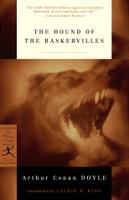 [[H I S T O R Y]] * Who better to become the subject of a mystery than Sir Arthur Conan Doyle, the Scottish-born doctor turned author who gave the world its now best-recognized fictional detective, Sherlock Holmes? The Independent, a British newspaper, reports that “a team of literary sleuths” hope to perform “a macabre exhumation in a Devon [England] churchyard” that they say will prove Conan Doyle was not only a highly successful litterateur, inveterate traveler, sportsman, and internationally desired speaker, but “a murderer and a thief” on top of it.
[[H I S T O R Y]] * Who better to become the subject of a mystery than Sir Arthur Conan Doyle, the Scottish-born doctor turned author who gave the world its now best-recognized fictional detective, Sherlock Holmes? The Independent, a British newspaper, reports that “a team of literary sleuths” hope to perform “a macabre exhumation in a Devon [England] churchyard” that they say will prove Conan Doyle was not only a highly successful litterateur, inveterate traveler, sportsman, and internationally desired speaker, but “a murderer and a thief” on top of it.This theft accusation dates back at least to 1959, when the first color-film version of Conan Doyle’s classic 1902 novel, The Hound of the Baskervilles, was released, starring Peter Cushing as the brilliant but bothered Holmes. By way of promoting its movie (which was intended as the initial installment in a series), the UK-based Hammer Films studio spread the story of an 88-year-old former coachman who’d once been employed by a British journalist and editor named Bertram Fletcher Robinson, the man acknowledged to have provided the inspiration for Hound--but whom the coachman claimed was also the novel’s co-author. Robinson’s association with Hound is familiar to Conan Doyle enthusiasts. As Martin Booth explains in his 1997 Conan Doyle biography, The Doctor and the Detective, Holmes’ creator originally encountered the journalist in 1900, during a visit to South Africa. The two met up again in March 1901, for a four-day golfing holiday in Norfolk, during which Robinson--then on the payroll of the Daily Express newspaper, but later to become the editor of Vanity Fair--regaled Conan Doyle with folk yarns from his native Devon, in southwestern England, “mentioning the legends of spectral hounds that were said to roam Dartmoor.” Booth continues:
These stories caught Conan Doyle’s imagination. He knew of the wildness of Dartmoor ... and thought it worthwhile setting a horror story there. He wrote from Cromer to his mother to tell her he was going to collaborate with Robinson on ‘a real creeper’ which, at first, was not intended to be a Sherlock Holmes story.The novelist subsequently visited Dartmoor, in company with Robinson, to get first-hand impressions of the place, which was renowned for its moors, mires, mansions, and prison. “With such stimuli,” Booth recalls, “the story quickly took form. Conan Doyle considered inventing a new hero for it, then realised he had one. It was Sherlock Holmes. Within a few days was born one of the most famous stories in English literature, The Hound of the Baskervilles.” Rather inconveniently, however, Conan Doyle--who’d thought his talents wasted on the best-selling Holmes “police romances”--had previously killed off his eccentric protagonist, at Switzerland’s Reichenbach Falls, in “The Adventure of the Final Problem” (1893). But he overcame that difficulty by setting his haunting new adventure about a malevolent canine at a time prior to the sleuth’s supposed demise.
Conan Doyle made no bones about his inspiration for Hound (although Daniel Stashower, in his 1999 biography, Teller of Tales, suggests that Robinson, in fact, picked up the spectral dog yarn from “a Welsh guidebook,” rather than from his Devon youth). After the novel was published, Robinson inscribed a copy to Harry Baskerville, his young “pony and trap” driver, “with apologies for using the name.” (Baskerville was apparently the very same coachman who would later finger Conan Doyle as a killer.) Any notion, though, of Conan Doyle co-writing the novel with Robinson “was dropped early on,” according to Booth.
The honorable Conan Doyle wanted Robinson to share the credit but [Henry] Greenough Smith [editor of The Strand Magazine, which would syndicate Hound in 1901] refused to oblige him. A Sherlock Holmes story had to appear under just one name and that had to be Sir Arthur Conan Doyle. Despite this editorial decision, Conan Doyle acknowledged his source for the story in both the serialisation and the subsequent book. It is also thought he saw that Robinson received some payment for his origination.Not long after The Hound of the Baskervilles appeared in print, Conan Doyle was convinced, by both public and publisher demand, to revive his “consulting detective” in the 1903 story “The Adventure of the Empty House.” (As he told it, Holmes didn’t perish in Switzerland after all, but instead survived and stayed in hiding for two years, traveling the world, until he could safely return--just in time to help his faithful chronicler, Dr. John H. Watson, solve another murder). Conan Doyle went on to campaign (unsuccessfully) for a seat in Parliament and to write dozens more books, including The Lost World (1912), a fourth and final Holmes novel (The Valley of Fear, 1915), and enough Holmes and Watson short stories to fill three more collections, the last of those being The Case-Book of Sherlock Holmes (1927). After a peculiar and unfortunately very public dalliance with spiritualism, and after spending more than a million dollars trying to prove that fairies exist, Sir Arthur died on July 7, 1930, from heart disease.
 Bertram Fletcher Robinson, meanwhile, went to his grave in 1907, five years after Arthur Conan Doyle was knighted. The official cause of death: typhoid. Yet Paul Spiring, a scientist who’s coordinating the latest investigation into this journalist’s passing, alleges that Robinson was in truth “poisoned with laudanum, administered by his wife under the instruction of Conan Doyle.” The motive? To cover up the embarrassing fact that Holmes’ “father” was a fraud--that he’d not just taken his inspiration for Hound from Robinson, but had plagiarized the tale from a Robinson manuscript entitled “Adventure on Dartmoor.” If these accusations sound familiar, it’s because they were also made five years ago, in a sensationalistic volume called The House of the Baskervilles, by Rodger Garrick-Steele. Garrick-Steele further bruited it about that Conan Doyle had been engaged in an affair with Robinson’s wife, Gladys, and that the journalist threatened to reveal the whole sordid mess to the world. There have been rumors, too, over the years of a note--penned by Gladys Robinson and secreted inside her spouse’s coffin--confirming Conan Doyle’s direction of this homicidal intrigue.
Bertram Fletcher Robinson, meanwhile, went to his grave in 1907, five years after Arthur Conan Doyle was knighted. The official cause of death: typhoid. Yet Paul Spiring, a scientist who’s coordinating the latest investigation into this journalist’s passing, alleges that Robinson was in truth “poisoned with laudanum, administered by his wife under the instruction of Conan Doyle.” The motive? To cover up the embarrassing fact that Holmes’ “father” was a fraud--that he’d not just taken his inspiration for Hound from Robinson, but had plagiarized the tale from a Robinson manuscript entitled “Adventure on Dartmoor.” If these accusations sound familiar, it’s because they were also made five years ago, in a sensationalistic volume called The House of the Baskervilles, by Rodger Garrick-Steele. Garrick-Steele further bruited it about that Conan Doyle had been engaged in an affair with Robinson’s wife, Gladys, and that the journalist threatened to reveal the whole sordid mess to the world. There have been rumors, too, over the years of a note--penned by Gladys Robinson and secreted inside her spouse’s coffin--confirming Conan Doyle’s direction of this homicidal intrigue.Spiring suggests Gladys Robinson “tipped off Conan Doyle that her husband was unhappy that he was poorly remunerated for his efforts. He then suggested she should slip him laudanum, as he knew its symptoms were similar to typhoid.” As Spiring tells The Independent, “We’re not saying she was necessarily a co-conspirator in this, really more of a patsy.” He’s hoping that an exhumation of Bertram Fletcher Robinson’s remains in Devon will finally put to rest questions about the man’s death. Spiring intends to apply next week to the Diocese of Exeter for permission to unearth Robinson’s coffin.
Authorities on Conan Doyle’s life and career have dismissed these charges of theft and murder repeatedly over the years. No less than the author’s own son, Adrian, refuted Harry Baskerville’s claims back in 1959, insisting that Robinson had manifestly eschewed his father’s offer to work together on the initial drafts of what would become The Hound of the Baskervilles, and that Conan Doyle had not plagiarized anything. Still, rumors of Conan Doyle’s criminality persist, and will likely go on circulating, no matter what Spiring and Company discover in that Devon churchyard. People love mysteries, especially those combining celebrated personages with malicious contrivances. (Consider the continuing fascination with President John F. Kennedy’s 1963 assassination, the 1888 Jack the Ripper mutilations, and the 1930 disappearance of Judge Joseph Crater.) As much as we may exalt scientific proof and the ordered geometry of logic, we’re nonetheless drawn to the unknown. We’re attracted by the opportunity to be surprised, even about people or things we think we understand. And there can be much to surprise us, indeed. As Sherlock Holmes remarks in “A Case of Identity” (1891), “Life is infinitely stranger than anything which the mind of man could invent.”
UPDATE: As reported by BBC News on August 3, the Ipplepen Parish Council, in Devon, England, has decided to ask for public comment before any formal application is made to the Diocese of Exeter to exhume the almost 100-year-old gravesite of Bertram Fletcher Robinson. A small parish church committee earlier rejected the proposed disinterment.







1 comment:
Balderdash, I say. This would be a three-pipe problem only for those who've been putting some rather peculiar weed in their pipes.
Post a Comment